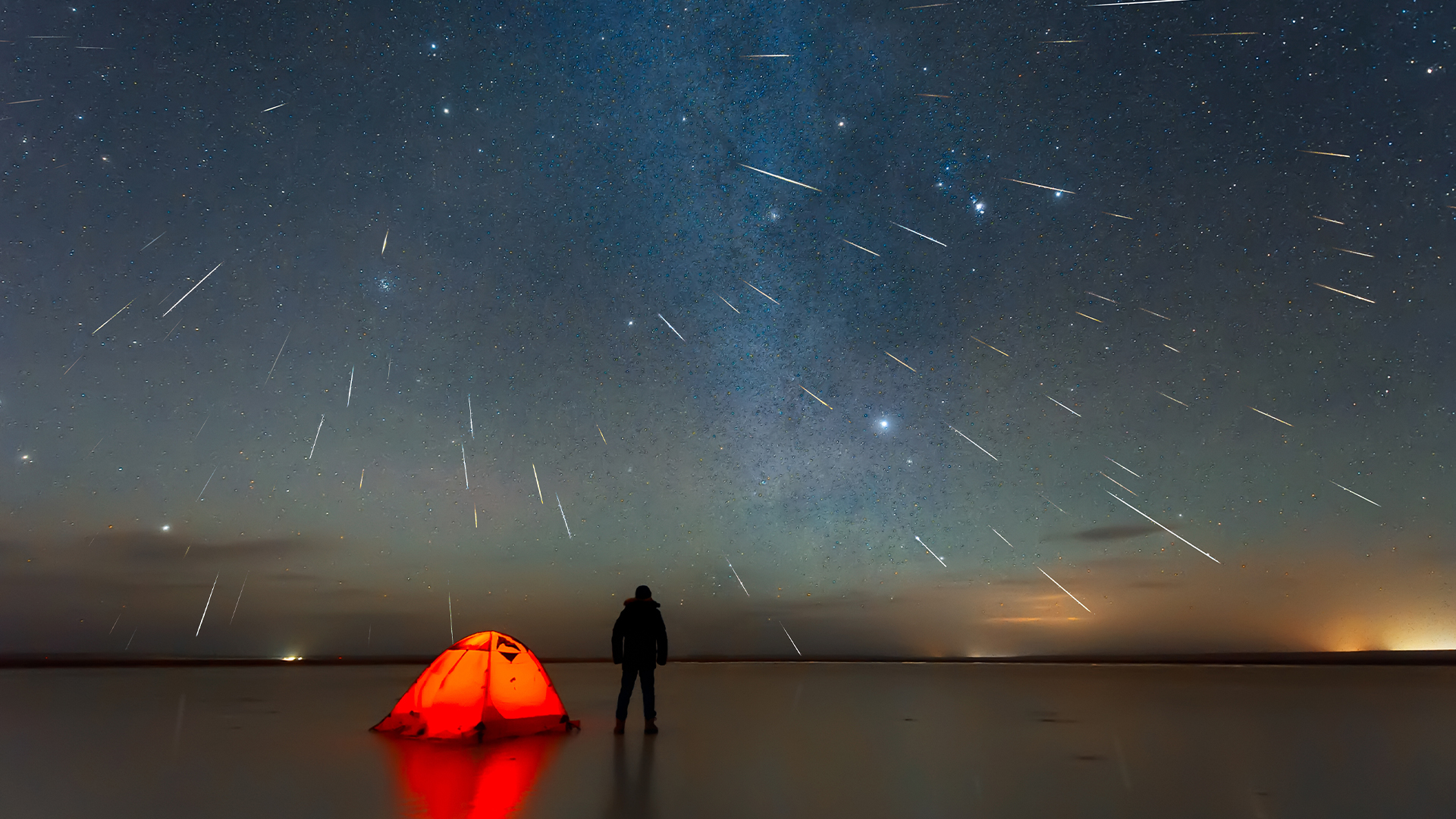When you purchase through links on our website , we may realize an affiliate commission . Here ’s how it work on .
It ’s almost time for the Lyrids , the meteor shower that originates from the arse of a comet that circles the sun once every 415 years .
The comet may be a rare peck , but Earth passes through debris from its field every year in recent April . This year , the medium - bright meteor that occur when the debris blotch through the air will be seeable between April 16 and April 30 in the Northern Hemisphere .

A likely Lyrid streaks through the atmosphere in this 2012 astronaut photo from the International Space Station.
To look on , calculate up after 10:30 p.m. local time wherever you could find a dark patch of sky with little wanton contamination . The moon will be waxing humpbacked during the Lyrids this year , with a full moon on April 26 , meaning light pollution from the moon will be an issue for skywatchers . The considerably viewing , according to NASA , will be after the moonlight set and before the sun rises . That might mean that have up early is a proficient wager than staying up late — — on April 20 in New York , for example , the half lunar month will set at 2:48 ante meridiem , offering a viewing windowpane until cockcrow at 6:09 a.m.
The Lyrids appear to originate from the configuration Lyra , northeast of thebright star Vega . Lyra looks like a lopsided square toes . It ’s not necessary to look right at Lyra , though , as the slant of approach will make the shooting star tails look shorter . To get the dear view of long - tag meteoroid , lie on your back with your metrical foot confront eastward and seek to get as wide a position of the sky as you’re able to . Give your eye 20 to 30 mo to adjust to the darkness so as to see dimmer meteors .
Typically , the Lyrids give rise 10 to 20 meteors an hour , though they can now and again burst out with a fusillade of 100 or so an hour . Such outbursts have been recorded in the United States in 1803 and 1982 , in Greece in 1922 and in Japan in 1945 , according toNASA .

— astonishing photos of the Perseid meteor cascade
— In exposure : Glitzy image of a supermoon
— When blank attack : 6 craziest meteor shock

The Lyrids are fragments from the tail of Comet Thatcher , a comet discovered in 1861 . However , Thatcher has been zipping through thesolar systemfor a lot long than that : The first reported sighting of the meteor shower was inChinain 687 B.C. , do the Lyrids one of the oldest meteor showers known .
If you lack the Lyrids , the next luck to see a meteoroid shower will observe soon after . On May 6 , theEta Aquaridswill peak . They ’re considerably viewed closer to the equator , but put up views of 10 to 30 shot stars an hour in the northern latitude , harmonize to theAmerican Meteor Society .
in the first place published on Live Science .














